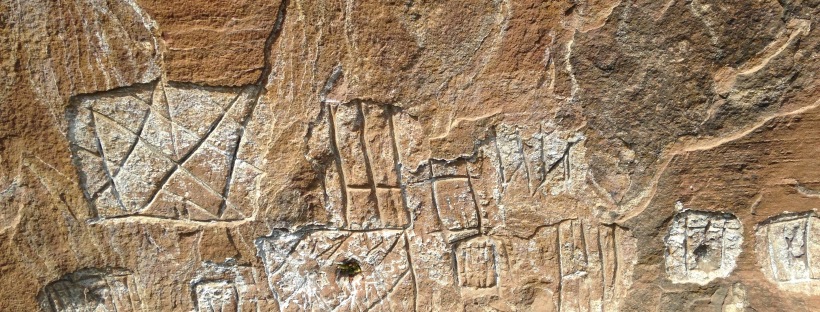This year I swapped part of the European summer for the South American winter, travelling to Santa Catarina, Brazil as part of my doctoral research. For those of you who don’t already know, as a bioarchaeologist who specialises in cremated human remains, I spend an inordinate amount of time looking at and thinking about burned bones (for more see our recent burned bones publication). Inevitably, this means that I’m often in the lab, but during my trip I managed to return to some spectacular sites in the highlands too.
I’ve blogged before about some of my doctoral project on the cremated human remains from southern Jê sites but in summary, there is evidence indicating that cremation was a significant practice for southern Jê groups, who cremated at least some of their dead and deposited them in mound and enclosure complexes. These are earthwork monuments in the highlands which are often set at the tops of hills and plateaus. For my project I apply a mixture of methods from forensic science and chemistry, bioarchaeology and digital archaeology to analyse burned bone from a site called Abreu and Garcia, which we are excavating and studying as part of the Jê Landscapes of Southern Brazil project.
To this end, I spent several weeks at GRUPEP, UNISUL analysing recently excavated bone. I recorded aspects such as age, sex, disease, taphonomic effects and used portable analytical devices to collect microscopic primary data. I also took the opportunity to meet my Brazilian supervisor Professor Sheila Mendonça de Souza. We had some excellent conversations and she shared useful research experiences with me.

In the lab refitting fragments of burned bone at GRUPEP
Archaeologists don’t just live in the lab though. We managed to hire a Renault Duster in Tubarão to travel back to the highlands and visit Abreu and Garcia (which also happens to be a vineyard) and the Urubici region. This included Avencal and spectacular locations like Morro da Igreja and Serra do Corvo Branco (more on that later).
Journey to Abreu and Garcia
We set out early for Abreu and Garcia as we had agreed to join a vineyard tour session running in the afternoon. Taking the road up into the highlands we ascended the amazing Serra do Rio do Rastro. After six hours we made our way to the dirt track leading off the BR-282, crossed the Rio Caveiras on a concrete slab bridge, and drove through the small hamlets of the area.
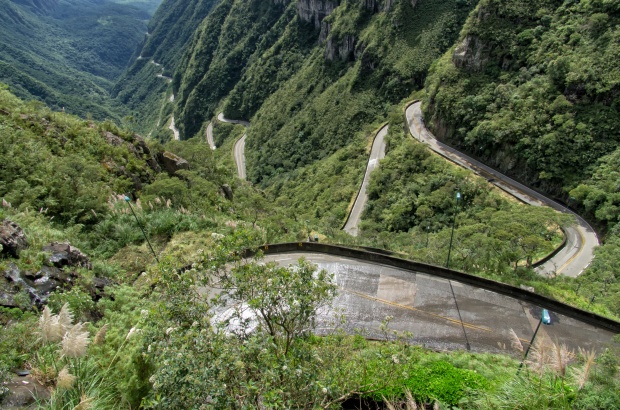
Serra do Rio do Rastro (by Otávio Nogueira licenced CC BY 2.0)
We arrived just in time to give an impromptu talk to the tour group on the significance of the archaeological site. The visitors were fascinated by the explanation and our project results. The site occupies a plateau with broad panoramic views, comprising a pair of mound and enclosure complexes aligned on a southeast-northwest axis, which is similar to others across the region. The eastern complex is the smaller of the two, with a single mound. The western complex has both a central mound and smaller secondary mound.
As mentioned, these sites are associated with southern Jê funerary practices, and a series of secondary cremated deposits were recovered at Abreu and Garcia in 2014 and 2015. The site also has phenomological qualities, for example the elevated plateau location provides the conditions for cloud inversions which are particularly beautiful.
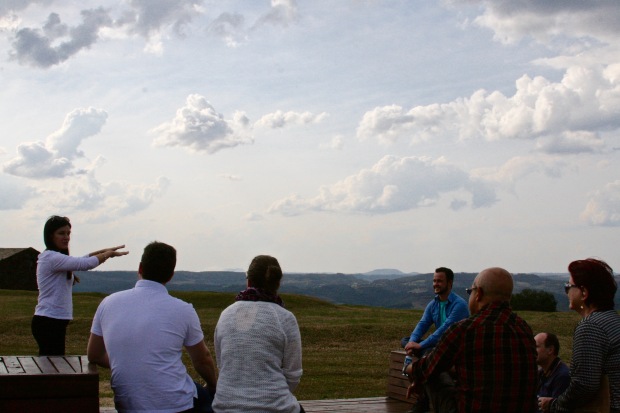
Explaining the funerary practice of cremation by southern Jê groups at Abreu and Garcia
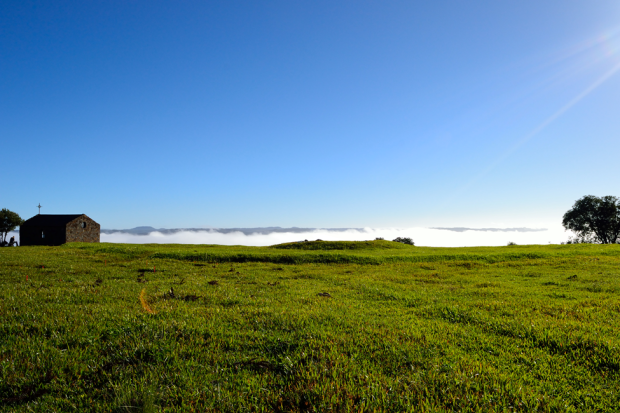
A cloud inversion at Abreu and Garcia in 2015 (Priscilla Ulguim CC-BY-NC-ND 4.0)
After descending from the plateau we toured the vineyard and tasted wines with the group. Leonardo, a wine expert who is enthusiastic about our research, kindly presented me with a bottle of a new sparkling wine inspired by the archaeological site, named Geo.
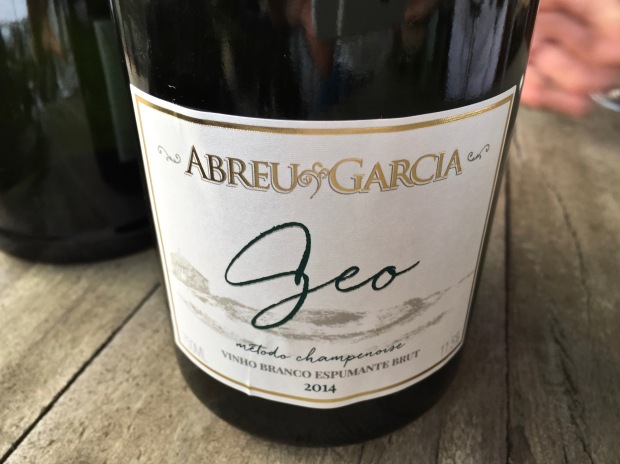
A sketch of the archaeological site on the label of the sparkling wine
Urubici: Avencal and Morro da Igreja
The following day we visited the Urubici region. This is a beautiful area with a rich archaeological heritage and burgeoning ecotourism industry. We stopped by Avencal I, a cliff site with parietal art engraved in panels around a waterfall. The site itself was first recorded by archaeologists in the 1960s and 1970s and was more recently investigated by Riris and Corteletti in 2015. The JLSB team are currently carrying out excavations there. The setting is beautiful, on the edge of a steep-sided, wooded valley, which leads up to a spectacular cascading waterfall, just visible in the distance.

Cascata do Avencal (Priscilla Ulguim CC BY-NC-ND 4.0)

Engravings at Avencal I (Priscilla Ulguim CC BY-NC-ND 4.0)
We collected photos to verify the capability of various devices for image-based modelling using SFM-MVS. I have already applied this method to excavation contexts containing cremated human remains and I am currently finishing a chapter on the technique for recording in-situ human remains which is to be published in a forthcoming volume from Elsevier. It was great to also be able to apply the method to surface engravings, and the lighting was perfect for image capture. One of the resulting models is now available on SketchFab.
Return via Serra do Corvo Branco
Before we returned to Tubarão we managed to see other sights of Urubici, including the Morro da Igreja, a 1822 m peak between the Serra do Rio do Rastro and Serra do Corvo Branco. This is one of the coldest spots in Brazil, and after a clear start, a heavy fog descended and we slowed to a crawling pace. By the time we reached the limit of the road for civilians, at an Air Force communications station, visibility was a metre at best. Nevertheless, it was still remarkable.
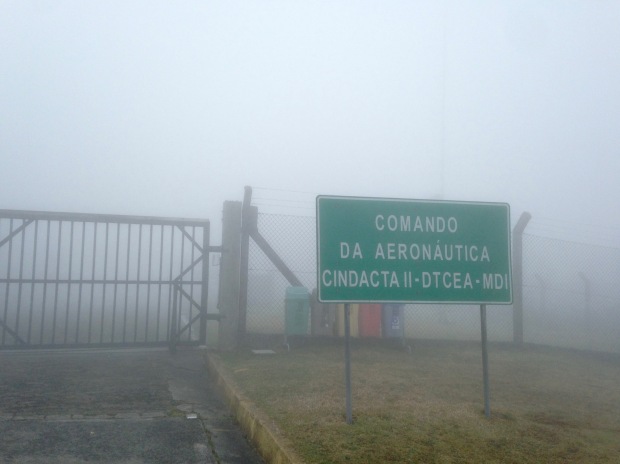
Morro da Igreja in the fog (Priscilla Ulguim CC BY-NC-ND 4.0)
We descended towards Urubici, and for the return trip to Tubarão found a shortcut on the map. It happened to take us via the Serra do Corvo Branco, which turned out to be a mini-adventure in itself. As they say, Brazil is not for beginners.
The mists that we had driven through on the Morro da Igreja continued to descend as we climbed to the Serra do Corvo Branco, already late in the afternoon and with dusk falling. After we scaled the dirt track and navigated past cattle in the road we were greeted with the rather ominous trench cut 90 m into the rock face. This trench had immense walls and an old sign which appeared to have been removed, with the words Pista Interrompida. At that moment the route became a little worrying, but as we had already passed other cars on the way up we decided to push on.

Serra do Corvo Branco (by Willian Schneider licenced CC BY-SA 4.0)
Emerging from the rock-cut passage we made our way down the winding road which navigates the awesomely steep vertical descent of the mountain face on the other side. If this was impressive, the next 30 km on the SC-370 to Grão-Pará were boneshaking and bumpy. We passed only a few cars and some adventurous quad bikers in the dark. Given it had rained all of the previous night the track was muddy, and as darkness fell, it was clear we were in for a challenging drive over surfaces that ranged from bad to very bad. Needless to say, it was good to get back onto a paved road at Rio Braço do Norte and the car needed a deep clean the next day, but this certainly added to the adventure.

Muddy Duster (Priscilla Ulguim CC BY-NC-ND 4.0)
My thanks go to the team at GRUPEP and Professor Deisi for hosting me once again so kindly, they always receive me very warmly and are a very positive and engaged research group. I also thank Abreu Garcia, particularly Leonardo for hosting our project, as well as Teesside University and CAPES for support with the research. You can find out more about the Jê Landscapes of Southern Brazil project here.
